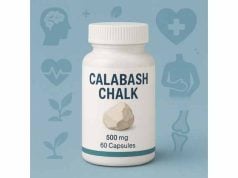What is secondary glaucoma?
Secondary glaucoma is a type of glaucoma that develops as a result of another eye condition or injury. Secondary glaucoma, as opposed to primary glaucoma, is caused by eye trauma, inflammation, tumors, advanced cataracts, diabetes, or the use of certain medications such as corticosteroids. The condition causes increased intraocular pressure (IOP), which can damage the optic nerve and cause vision loss if not treated properly.
Secondary glaucoma has several subtypes, each with its own set of underlying causes. For example, neovascular glaucoma is associated with abnormal blood vessel growth, which is frequently caused by diabetes or retinal vein occlusion. Uveitic glaucoma is characterized by inflammation of the uveal tract of the eye. Traumatic glaucoma can develop after an eye injury that disrupts the normal fluid dynamics within the eye.
Secondary glaucoma symptoms vary according to the cause, but they typically include blurred vision, eye pain, headaches, halos around lights, and loss of peripheral vision. The disease can progress quickly, and if not treated right away, it can result in permanent vision loss.
A comprehensive eye examination is required to diagnose secondary glaucoma, which includes tonometry to measure IOP, gonioscopy to examine the eye’s drainage angle, and visual field testing to assess the extent of vision loss. Imaging techniques like optical coherence tomography (OCT) and fundus photography are also used to assess the health of the optic nerve and retina.
Effective Management of Secondary Glaucoma
The management and treatment of secondary glaucoma focuses on lowering intraocular pressure, addressing the underlying cause, and preventing further optic nerve damage. Treatment plans are tailored to the specific type of secondary glaucoma and the patient’s overall health status.
- Medications: The first line of treatment for secondary glaucoma is typically intraocular pressure-lowering medications. This may include:
- Prostaglandin Analogues: These medications increase the flow of aqueous humor, lowering IOP. Examples are latanoprost, bimatoprost, and travoprost.
- Beta Blockers: These drugs reduce the production of aqueous humor. Timolol and betaxolol are common medications.
- Alpha Agonists: These medications decrease aqueous humor production while increasing its outflow. Brimonidine is a commonly used alpha agonist.
- Carbonic Anhydrase Inhibitors: These decrease aqueous humor production. Topically (e.g., dorzolamide, brinzolamide) or orally (e.g., acetazolamide).
- Rho Kinase Inhibitors: A newer type of drug that lowers IOP by increasing outflow through the trabecular meshwork. Netarsudil is an example.
- Laser Therapy: The following laser procedures can be used to treat secondary glaucoma:
- Laser Trabeculoplasty: This procedure utilizes a laser to improve drainage through the trabecular meshwork. It is commonly used to treat open-angle glaucoma and can be effective in lowering IOP.
- Laser Peripheral Iridotomy: This procedure, which is most commonly used for angle-closure glaucoma, creates a small hole in the iris to improve fluid flow within the eye.
- Cyclophotocoagulation: This laser treatment targets the ciliary body and reduces the production of aqueous humor. It is most commonly used to treat advanced or refractory glaucoma.
- Surgical Interventions: If medications and laser treatments fail to control IOP, surgical options may be considered:
- Trabeculectomy: This surgery opens a new drainage pathway for aqueous humor to exit the eye, lowering IOP. It is one of the most widely used surgical treatments for glaucoma.
- Glaucoma Drainage Devices: These implants help to remove excess fluid from the eye. Examples include the Ahmed valve, Baerveldt tube, and Molteno implant.
- Minimally Invasive Glaucoma Surgery (MIGS): These procedures are less invasive than traditional glaucoma surgeries and typically result in faster recovery times. Examples include the iStent, Hydrus microstent, and Xen Gel Stent.
- Addressing Underlying Causes: Effective management of secondary glaucoma frequently necessitates treating the underlying condition that is causing elevated IOP. This may involve:
- Anti-inflammatory Medications: Corticosteroids or other anti-inflammatory drugs are used to treat uveitic glaucoma.
- Anti-VEGF Therapy: Anti-VEGF (vascular endothelial growth factor) injections can help with neovascular glaucoma by reducing abnormal blood vessel growth.
- Surgical Repair: In some cases, traumatic glaucoma requires surgical intervention to repair eye damage and restore normal fluid dynamics.
- Lifestyle and Monitoring: Patients with secondary glaucoma must attend regular follow-up appointments to monitor their IOP and overall eye health. Adopting a healthy lifestyle, such as a balanced diet, regular exercise, and quitting smoking, can also benefit overall eye health.
Advanced Secondary Glaucoma Treatment Techniques
The treatment landscape for secondary glaucoma is constantly changing, with significant advances in medical research and technology leading to novel therapies and better outcomes for patients. These cutting-edge innovations provide new hope for better managing this complex condition.
Advanced Drug Delivery Systems
Traditional glaucoma eye drops have limitations, such as poor adherence, inconsistent drug delivery, and potential side effects. Innovative drug delivery systems are addressing these issues, resulting in more effective and convenient treatments.
- Sustained-Release Implants: Sustained-release implants, such as the bimatoprost implant (Durysta), are inserted into the eye to provide a controlled release of medication over several months. This reduces the need for daily eye drops, increases patient compliance, and ensures consistent drug delivery. These implants have shown promise in terms of maintaining low IOP levels and improving overall treatment outcomes.
- Nanotechnology-Based Eye Drops: Nanotechnology is used to improve the delivery and efficacy of glaucoma medications. Nanoparticles can encapsulate drugs and increase their penetration through the ocular surface, resulting in better absorption and longer-lasting therapeutic effects. Research into nanotechnology-based eye drops is ongoing, with the potential to transform glaucoma treatment.
- Injectable Gel Formulations: Researchers are working on injectable gel formulations that will release glaucoma medication over time. These gels can be injected into the subconjunctival space or the anterior chamber of the eye, resulting in long-term drug release and fewer treatments. This strategy aims to increase patient compliance while maintaining consistent IOP control.
Genetic Therapy
Gene therapy holds great promise for treating secondary glaucoma because it targets the underlying genetic and molecular mechanisms that contribute to elevated IOP. Experimental studies and clinical trials are exploring various gene therapy approaches:
- Adeno-Associated Virus (AAV) Vectors: AAV vectors can be used to deliver therapeutic genes to the eye, promoting protein production that either increases or decreases aqueous humor outflow. Early research has shown that AAV-mediated gene therapy can effectively lower IOP and protect the optic nerve in animal models of glaucoma.
- CRISPR-Cas9 Gene Editing: CRISPR-Cas9 technology enables precise editing of specific genes linked to glaucoma. Researchers hope to develop gene therapies that protect against the progression of glaucoma by targeting genes that control aqueous humor dynamics or optic nerve health. While still in the experimental stage, CRISPR-Cas9 gene editing has demonstrated promise in preclinical studies.
Neuroprotection and regeneration
In glaucoma treatment, it is critical to protect and regenerate the optic nerve. Advances in neuroprotection and regenerative medicine are providing new ways to preserve vision and repair damaged nerve tissue.
- Neuroprotective Agents: Researchers are looking for compounds that can protect retinal ganglion cells (RGCs) from degeneration. Brimonidine, memantine, and citicoline are among the agents under investigation for their ability to improve RGC survival and maintain visual function in glaucoma patients.
- Stem Cell Therapy: Stem cells show promise in regenerating damaged optic nerve tissue and restoring vision. Induced pluripotent stem cells (iPSCs) can be differentiated into RGCs and implanted in the eye to replace lost cells. While still in the early stages of development, stem cell therapy has shown promise in animal models and could be a future treatment option for glaucoma patients.
Artificial Intelligence, Machine Learning
Artificial intelligence (AI) and machine learning (ML) are transforming glaucoma diagnosis, monitoring, and treatment. These technologies provide new capabilities for early detection, personalized treatment, and predictive analytics.
- AI-Enhanced Diagnostic Tools: Artificial intelligence algorithms are being developed to accurately analyze diagnostic images such as OCT and fundus photographs. These tools can detect subtle changes in the optic nerve and retinal layers, allowing for earlier diagnosis and treatment. AI-enhanced diagnostic tools can also help distinguish between different types of glaucoma, allowing for more effective treatment strategies.
- Predictive Analytics: Machine learning models can analyze large datasets to identify patterns and risk factors for glaucoma progression. Predictive analytics can assist ophthalmologists in determining the likelihood of disease progression in individual patients, allowing for more tailored and proactive treatment plans.
Minimal Invasive Glaucoma Surgery (MIGS)
MIGS procedures are less invasive surgical options for managing secondary glaucoma, resulting in fewer complications and shorter recovery times than traditional glaucoma surgeries.
- iStent and Hydrus Microstent: The iStent and Hydrus microstent are small implants that are inserted into the trabecular meshwork to improve aqueous humor outflow. These devices have demonstrated success in lowering IOP with fewer complications and a faster recovery time than traditional surgeries.
- Xen Gel Stent: The Xen Gel Stent is a small, flexible tube that is inserted into the eye to provide a new drainage pathway for aqueous humor. This device lowers IOP by bypassing the trabecular meshwork and directing fluid to the subconjunctival space. The Xen Gel Stent is a minimally invasive, outpatient procedure that provides a safer and more convenient option for glaucoma patients.
- InnFocus MicroShunt: The InnFocus MicroShunt is another innovative MIGS device that reduces IOP by opening up a new drainage pathway for aqueous humor. It is made from a biocompatible material that reduces inflammation and scarring, potentially improving long-term outcomes. Clinical trials have shown promising results in lowering IOP and preserving drainage patency over time.
Patient Centered Care and Education
Advances in patient-centered care and education are critical to improving secondary glaucoma management. Empowering patients with knowledge and support leads to improved adherence to treatment plans and early detection of complications.
- Telemedicine and Remote Monitoring: Telemedicine platforms allow for remote consultations and follow-up visits, giving patients convenient access to care. Remote monitoring tools, such as smartphone apps and wearable devices, enable patients to track their IOP and other symptoms, ensuring prompt intervention if necessary. Telemedicine and remote monitoring improve continuity of care and patient outcomes.
- Patient Education Programs: Comprehensive education programs inform patients about the risks, symptoms, and treatment options for secondary glaucoma. These programs are available in a variety of formats, including in-person consultations, online resources, and multimedia presentations. Patients who are educated are more likely to recognize symptoms early on and seek treatment as soon as possible, which improves outcomes and satisfaction.
- Personalized Treatment Plans: Personalized treatment plans take into account each patient’s specific medical history, lifestyle, and visual requirements. Ophthalmologists can improve outcomes and quality of life for those suffering from secondary glaucoma by tailoring interventions to individual patients.
Future Directions for Secondary Glaucoma Treatment
The treatment of secondary glaucoma is rapidly evolving, with ongoing research and technological advancements opening up new avenues for improved management and outcomes. Several promising areas are currently under investigation:
- Combination Therapies: Using multiple treatment modalities, such as medications, laser therapy, and MIGS, may result in synergistic effects in controlling IOP and preventing optic nerve damage. Research into the most effective treatment combinations and sequences is ongoing, with the ultimate goal of developing comprehensive secondary glaucoma management strategies.
- Genetic and Molecular Research: Understanding the genetic and molecular mechanisms that cause secondary glaucoma can lead to the development of targeted treatments. This research could lead to the identification of new drug targets, biomarkers for early detection, and personalized treatment approaches based on a patient’s genetic profile.
- Neuroregenerative Therapies: Advances in neuroregenerative therapies, such as stem cell transplantation and gene editing, show promise for restoring damaged optic nerve tissue and maintaining vision in glaucoma patients. These therapies are still in the early stages of development, but ongoing research is focusing on overcoming technical and biological challenges in order to bring them closer to clinical application.
- Robotic-Assisted Surgery: Glaucoma procedures may benefit from greater precision and control thanks to robotics. Robotic systems can help surgeons perform delicate maneuvers while reducing surgical trauma and improving outcomes. Research into the feasibility and efficacy of robotic-assisted glaucoma surgery is ongoing, with the goal of incorporating this technology into clinical practice.
Alternative Treatment Options for Secondary Glaucoma
In addition to conventional medical and surgical treatments, a variety of alternative therapies can help manage secondary glaucoma. These methods aim to supplement traditional treatments, improve overall eye health, and possibly lower intraocular pressure (IOP). While these alternative treatments should not be used instead of conventional therapies, they can provide additional benefits when combined with a comprehensive treatment plan. Here, we’ll go over some of the most effective alternative treatments for secondary glaucoma in depth.
Nutritional Supplements
Nutrition is important for eye health, and certain supplements may help manage glaucoma by promoting optic nerve health and lowering oxidative stress.
- Omega-3 Fatty Acids: Fish oil and flaxseed oil contain omega-3 fatty acids, which have anti-inflammatory properties and may help lower IOP and protect the optic nerve. According to studies, omega-3 supplementation can improve blood flow to the eyes and lower the risk of glaucoma progression. Patients are encouraged to consume omega-3-rich foods such as salmon, mackerel, and walnuts, or to take omega-3 supplements as directed by their healthcare provider.
- Antioxidants: Antioxidants like vitamins C and E, zinc, and beta-carotene protect the optic nerve from oxidative damage. The Age-Related Eye Disease Study (AREDS) demonstrated the effectiveness of antioxidant supplementation in preventing vision loss due to age-related eye conditions. While research into antioxidants for glaucoma is limited, these nutrients promote overall eye health and may benefit glaucoma patients. Green leafy vegetables, fruits, nuts, and seeds are excellent sources of antioxidants.
- Ginkgo Biloba: Ginkgo biloba is a herbal supplement known for its neuroprotective and vasodilating properties. It has been shown to improve blood flow to the optic nerve, potentially preserving visual function in glaucoma patients. Some studies suggest that ginkgo biloba supplementation can improve visual field parameters while decreasing IOP. Patients should consult with their doctor before taking ginkgo biloba because it can interact with other medications.
- Coenzyme Q10: Coenzyme Q10 (CoQ10) is an antioxidant that promotes cellular energy production while protecting against oxidative stress. According to research, CoQ10 may protect the optic nerve and improve mitochondrial function in retinal ganglion cells. CoQ10 supplements can help glaucoma patients, particularly those with mitochondrial dysfunction. It can be found in foods such as beef, chicken, and peanuts, as well as in supplements.
Herbal Remedies
Various herbal remedies have long been used to manage eye health and may have potential benefits for glaucoma patients.
- Bilberry (Vaccinium myrtillus): Bilberry contains anthocyanins, which are antioxidants and anti-inflammatory. It has been used to enhance night vision and relieve eye strain. Some studies suggest that bilberry extracts can improve blood flow to the eyes and protect retinal cells from oxidative damage, which could benefit glaucoma patients.
- Eyebright (Euphrasia officinalis): Eyebright is a traditional herbal remedy that treats a variety of eye conditions, including inflammation and irritation. It has anti-inflammatory and astringent properties. While there is little scientific evidence to support its efficacy for glaucoma, eyebright can be used as an adjunctive treatment to soothe the eyes and alleviate discomfort.
- Coleus forskohlii: Coleus forskohlii contains forskolin, a compound known to lower IOP by increasing aqueous humor outflow. Some research has shown that forskolin eye drops can reduce IOP in glaucoma patients. Coleus forskohlii supplements are available, but patients should consult their physician before using them because they may interact with other medications.
Acupuncture
Acupuncture is an important part of traditional Chinese medicine that involves inserting thin needles into specific points on the body to promote healing and relieve pain. It is thought to regulate the flow of energy (qi) and help the body’s natural healing processes.
- Mechanism of Action: Acupuncture may lower IOP and improve blood flow to the optic nerve by stimulating specific acupuncture points. It can also influence the autonomic nervous system, lowering sympathetic activity while increasing parasympathetic activity, which can help lower IOP.
- Clinical Evidence: Several studies have looked into the effects of acupuncture on glaucoma, with some yielding promising results. According to research, acupuncture can temporarily reduce IOP and improve visual function in glaucoma patients. While more large-scale studies are required, acupuncture can be considered as an adjunctive therapy for glaucoma management.
Mind/Body Therapies
Mind-body therapies emphasize the relationship between mental and physical health in order to reduce stress and promote overall well-being. These therapies can help manage glaucoma by lowering stress-induced increases in IOP and improving overall health.
- Meditation and Mindfulness: Practices like meditation and mindfulness can help reduce stress and promote relaxation, which may benefit glaucoma sufferers. Chronic stress is known to contribute to high IOP, and stress management through meditation can help keep IOP levels low. Regular meditation can also boost mental clarity and emotional well-being.
- Yoga: Yoga is a combination of physical postures, breathing exercises, and meditation that promotes both physical and mental health. Specific yoga postures (asanas) and breathing techniques (pranayama) can help with circulation, stress reduction, and immune function. Regular yoga practice may help manage glaucoma symptoms while also improving overall health.
- Biofeedback: Biofeedback is a technique that uses electronic monitoring to teach people how to control physiological functions like heart rate, muscle tension, and blood pressure. Biofeedback can help reduce stress and promote relaxation, potentially relieving inflammation and pain in glaucoma patients.
Lifestyle Modifications
Certain lifestyle changes can help to improve eye health and supplement traditional secondary glaucoma treatments.
- Regular Exercise: Regular physical activity can lower IOP and improve cardiovascular health. Exercise improves blood flow to the eyes and reduces stress, which can help manage glaucoma. Patients should engage in moderate-intensity activities like walking, swimming, or cycling for at least 30 minutes per day.
- Healthy Diet: A diet high in fruits and vegetables, whole grains, lean proteins, and healthy fats promotes overall health and may benefit glaucoma patients. Nutrient-dense foods contain essential vitamins and minerals that promote eye health. Patients should limit their consumption of processed foods, sugar, and saturated fats, which can cause inflammation and oxidative stress.
- Hydration: Staying hydrated is essential for maintaining eye health. Adequate water intake promotes fluid balance and supports the outflow of aqueous humor. Patients should aim to drink at least eight glasses of water per day, but they should avoid drinking a lot of fluids in a short period of time, as this can temporarily raise IOP.
- Avoiding Smoking and Excessive Alcohol Consumption: Smoking and excessive alcohol consumption can be harmful to eye health and increase the risk of glaucoma progression. Quitting smoking and reducing alcohol consumption can improve overall health and the efficacy of glaucoma treatments.
- Regular Eye Exams: Regular eye exams are essential for the early detection and treatment of glaucoma. Patients should adhere to their ophthalmologist’s recommendations for routine checkups and monitoring. Early detection of changes in IOP or optic nerve health enables timely intervention and better management of the condition.
Homeopathy
Homeopathy is a holistic medical system that uses highly diluted substances to stimulate the body’s natural healing processes. While there is limited scientific evidence supporting the efficacy of homeopathy for glaucoma, some patients may benefit from specific homeopathic remedies.
- Common Remedies: Glaucoma and other eye conditions are treated with a variety of homeopathic remedies. Some commonly used remedies are:
- Phosphorus: Used to treat bleeding and visual disturbances.
- Osmium: Thought to help lower IOP and improve vision.
- Carbo Vegetabilis: Treats congestion and eye pressure.
- Gelsemium: Used to relieve eye pain and visual disturbances caused by anxiety.
- Individualized Treatment: Homeopathy is highly individualized, with remedies chosen based on the patient’s specific symptoms and overall health. A trained homeopath can evaluate the patient’s condition and prescribe the most effective remedies to promote healing and lower IOP.











